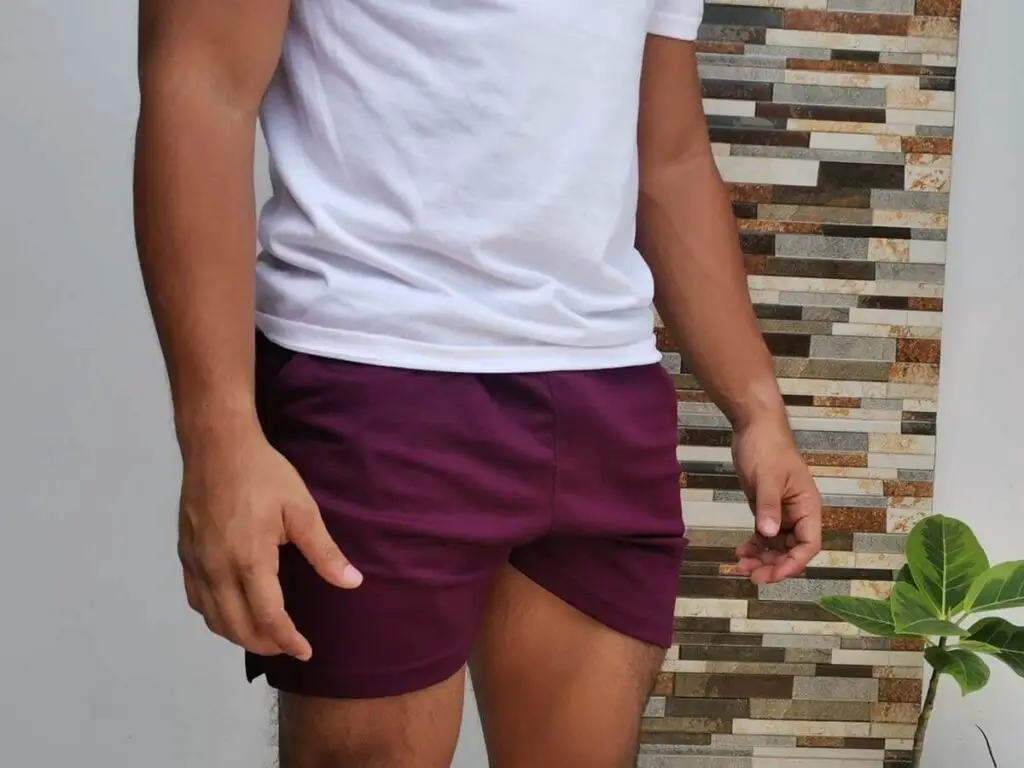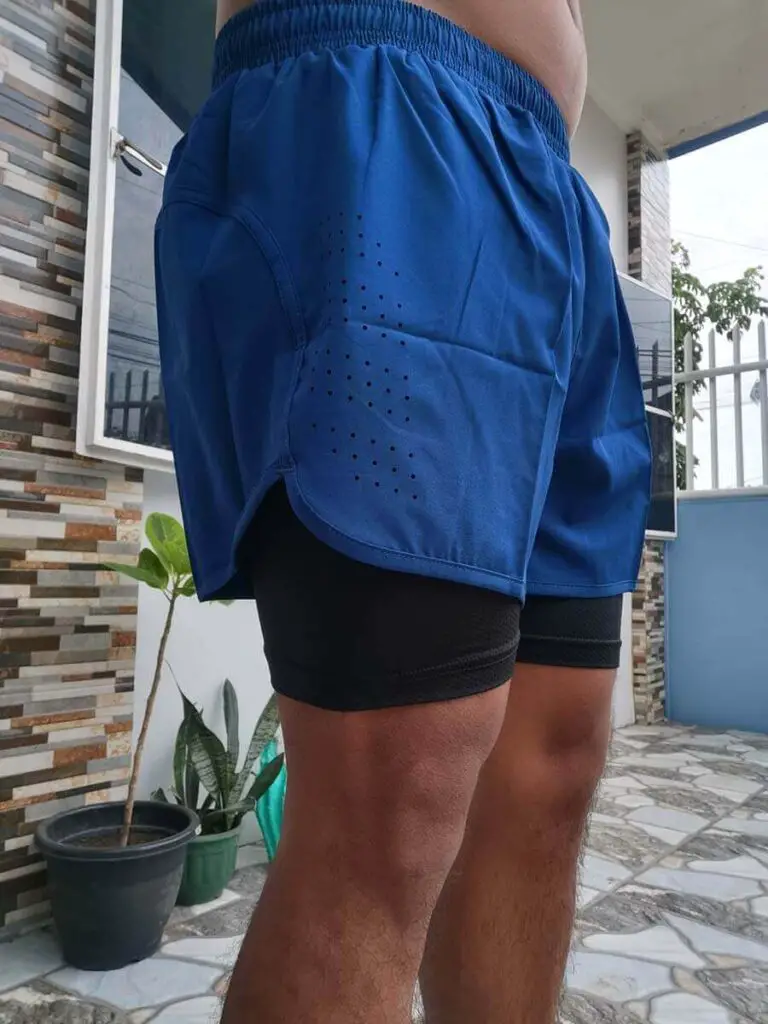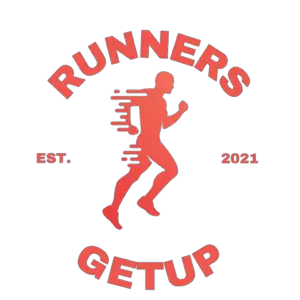This post contains affiliate links.
Every time I buy a new pair of running shorts, I always wonder the same thing. How tight should running shorts be?
On one hand, tight shorts might affect my range of motion. On the other hand, loose shorts may feel baggy and cause chafing. Which leaves me torn between 2 sizes.
After running for a considerable amount of time on different types and sizes of running shorts (Yes, I sometimes buy 2 sizes of the same shorts when I’m too confused) here’s what I can say about running short tightness.
Compression shorts have to be snug and tight to the point where it feels like a part of your body. Other types of running shorts, however, should be loose enough that it doesn’t have any tight spots that could cause chafing.
Ahead, we will discuss one of the most common dilemmas when buying running clothes, being torn between two sizes. We will also go over some tips on how each type of running shorts should fit.
THE DIFFERENT TYPES OF RUNNING SHORTS AND HOW THEY SHOULD FIT
There are 3 common types of shorts used in running namely V-notch shorts, compression shorts, and split shorts.
V-notch shorts are the most popular type of running shorts. They feature a V cutout on the outside of the short to allow for a range of motion. They should be considerably loose to avoid tight spots that can lead to chafing while being fit enough that it isn’t baggy.
This example below will give you an image of how that looks like.

Split shorts offer the widest range of motion making them for high-performance runners. It is often confused with V-notch shorts because of its V-shaped slit at the side similar to V-notch shorts. The main difference, however, is that split shorts are composed of 2 panels.
The panel in front overlaps the back panel allowing more range of motion.
With split shorts, just go with the size of your waistline. These types of shorts are made to reduce contact with your body so you can feel free when you run.
Compression shorts are spandex-like types of shorts that offer additional compression to your thighs.
It should be snug but not too tight where the compression bothers you. Think of it as a second layer of skin. You shouldn’t know it’s there after a few miles of running.
A good rule of thumb is that you shouldn’t see any wrinkles when you wear them. Wrinkles indicate that it’s too loose for you. Conversely, it shouldn’t be too tight that you can no longer insert your fingers in your thigh.
And by the way, if you’re still looking for a good pair of compression shorts, I highly recommend the Under Armour Heatgear. It’s definitely the best one I’ve tried so far. You can get it on Amazon.
I know I said there are 3 main types of running shorts but another type is gaining popularity and is being used more and more by runners. 2-in-1 shorts or lined shorts.
It has a lining inside the running shorts that serve as underwear. This type of running shorts is the trickiest to fit because its lining has to fit like compression shorts while the short itself shouldn’t be too tight.
Take a look at this image, for example. The lining is snug yet the V-notch shorts on the outside is loose and comfy.

By the way, what I’m wearing here is a Lixada 2-in-1 running short. I highly recommend this shorts because it’s very light and comfortable. The best part? It’s incredibly cheap. You can check the price on Amazon.
Here’s a summary of the running shorts and how they should fit.
| Type of shorts | Brief description | How it should fit |
|---|---|---|
| V-Notch shorts | The most popular type of shorts. Has a V-shaped cut at the side to give you a range of motion. | Has to be loose enough that it doesn’t have any tight spots anywhere but fit enough that it isn’t baggy. |
| Split shorts | Composed of 2 panels. The front panel overlaps the back allowing for the widest range of motion. | Stick with your waistline size. Split shorts are built to not be tight. |
| Compression shorts | Snug-fitting shorts that offer compression in the thigh. Acts like another layer of skin. | Has to be snug. Beware of wrinkles, it indicates that the compression short is too loose. On the other hand, it shouldn’t be too tight where you can no longer insert your fingers in between your shorts and your legs. |
| 2-1 shorts (lined shorts) | Running shorts that have an inner lining that acts as underwear. | The lining should be tight enough that it has no wrinkles while the shorts themselves should be loose enough that it doesn’t limit motion. |
(Related: What To Wear Under Running Shorts?)
TORN BETWEEN TWO SIZES: WHICH ONE SHOULD I PICK?
I had this very same experience when buying my 2-in-1 running shorts online. The sizing chart indicated that I was either a large and an extra-large.
If I pick large, the snugness of the inner lining (which was some type of compression shorts) could have a perfect fit but the short is stretched out near its upper limit.
In contrast, picking extra-large puts me on the low side of the sizing limit. I was afraid that the lining may be too loose for my liking.
I ended up buying both of them just to try them both out. Here’s what I recommend.
If you’re somewhere in between the 2 sizes based on the sizing chart, go for the larger size. Doing so will give you more range of motion and comfort.
The smaller size stretched out near its limit can sometimes be uncomfortable to run in. Plus, it could get ripped easily.
5 USEFUL TIPS ON HOW TO GET THE RIGHT RUNNING SHORTS SIZE
#1 Keep track of your waist and hip measurement in cm
Keep an updated measurement of your waist and hips ready. This will help you narrow down your choices when buying a running short.
#2 Always refer to the manufacturer’s sizing chart
Sure, you can try on different sizes in the fitting room, but the right way of doing it is to compare your measurements to the size chart. This will assure you get as close to the optimal size of running short that is right for you.
#3 Try it on and move actively, inspect for tight spots
A tiny tight spot in running shorts can cause a huge problem during long runs. Before buying the running shorts, make sure you try them on and move around. Do high knees, butt kicks, and stretch out in different directions.
If you notice areas of discomfort, no matter how small, pick another size or pick a different pair of shorts.
#4 Don’t rely on your usual short size
The most common mistake I make, especially when I’m buying online, is that I always refer to my ‘usual’ size.
Most of the time I get it right, but there were a lot of times where the running shorts were either too small or too big for me. This happens when I’m buying from a different brand.
#5 Look for the manufacturer’s size recommendation chart (if available)
Some manufacturers have a size recommendation chart that gives sizing recommendations based on your height and weight. Most online stores have them in the description or product photos. For physical stores, try asking the staff if they have them.
OTHER IMPORTANT THINGS TO CONSIDER IN A RUNNING SHORT
The length of the shorts
Unbeknownst to everyone, running short length is not only a matter of preference but also affects the overall performance and comfort of a running short.
Here’s a table summary of the different lengths, their advantages and recommendations.
| Length | Advantage | Recommended for: |
|---|---|---|
| Short (3 inches and below) | Offers the most range of motion and breathability | Race day, hot weather, marathon, professional runners |
| Medium (4-6 inches) | Most versatile. Offers a decent range of motion and breathability while still modest to run in public. | Recreational running, training, race day |
| Long (7-inches and above) | Offers the least range of motion but the most protection. | Cold weather, bushy trail |
If you want to go in-depth with running short lengths, I made an article that explains that in detail. Check it out.
The material of the running shorts
Running shorts have to be made with moisture-wicking material like polyester, wool, and nylon. This will allow the running shorts to stay light, prevent bacterial build-up, and avoid chafing.
The type of running shorts
As I explained earlier, there are different types of shorts all with their pros and cons.
But no type is better than the other, it’s all about preference. This is why I encourage you to try out different types and compare them for different situations.
The Wrap Up
Running shorts are one of the most comfortable types of shorts out there. They are light, quick-drying, and offer a wide range of motion that allows you to focus on your run.
(Related: Do Running Shorts Make a Difference In Running?)
Compression shorts should feel snug to get the most out of it. Other types of shorts, on the other hand, should neither be too tight that it creates discomfort and to lose that it becomes baggy.
To get the right size, refer to the manufacturer’s sizing chart, and try it on before buying it.
I hope this article answered your question about the right running shoe fit.

